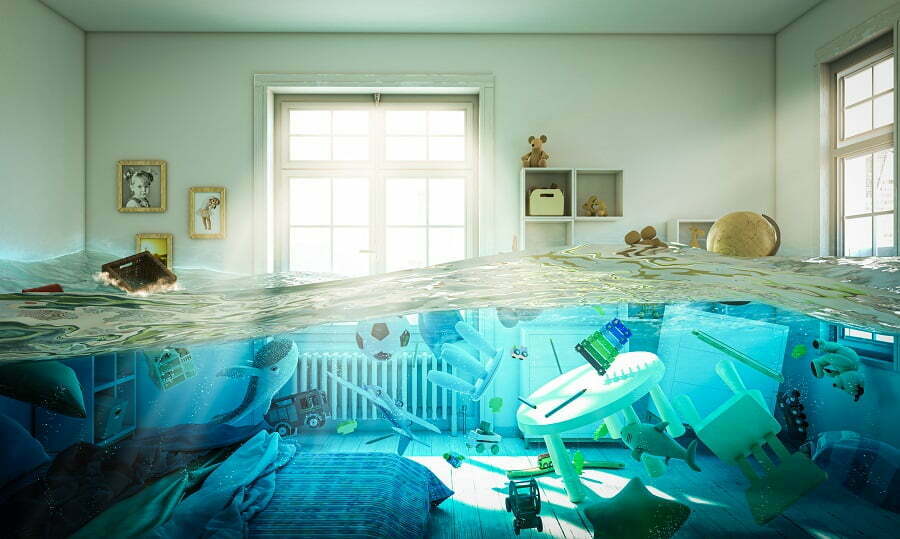Last updated on
Water damage can happen to anyone at any time. If your home experiences water damage, it is important to know how to handle the restoration process.
In this blog post, we will provide you with professional advice on how to do water damage restoration the right way. We will cover everything from assessing the damage to drying out the property.
So, if you are dealing with water damage, make sure to read this post.
The Water Damage Restoration Process – How To Do It Properly

Water restoration is a complex process and not something that should be attempted without expert help. However, understanding the basics of water damage restoration can help you navigate the process and ensure a successful outcome.
In essence, this process should aim to reduce the amount of damage, restore structural integrity, and prevent mold from growing. On the other hand, experts from Legacy Restoration say that the initial step is to assess the damage. Once you have an understanding of the extent of the water damage, it’s time to begin restoration.
A damage assessment is an important step as it will help you determine the right course of action. Here are some steps that must be taken in order to properly restore a property:
Remove Standing Water
First and foremost, all standing water must be removed as quickly as possible. This can be done using wet vacuums, pumps, and other specialized equipment.
All the standing water must be removed to ensure that mold will not start growing in a matter of days or weeks. The longer water is left standing the more likely it is that mold will develop.
Furthermore, all items that are waterlogged must be removed from the property as soon as possible.
Drying Out the Property
The next step is to properly dry out the property. This is done using powerful fans and dehumidifiers which will help to speed up the drying process.
Additionally, it’s important to open windows to encourage air circulation throughout the property. This step should be done in combination with a thorough cleaning and disinfecting of all surfaces.
Furthermore, it’s a good idea to move any furniture or items that were not damaged away from the affected areas. If you want to speed up the drying process, you can use a specialized floor drying system which is designed to quickly dry out floors and other surfaces.
Sanitize and Disinfect
Once all of the water has been removed and the property is properly dried out, it’s time to start sanitizing and disinfecting. This step is important as it will help to prevent mold from growing and reduce the likelihood of future water damage.
All surfaces must be thoroughly cleaned and disinfected in order to eliminate any potential sources of bacteria or mold. This is very important if the water damage was caused by sewage or toilet overflow.
Prevent Mold Growth
The last step is to take measures to prevent mold growth. This can be done by using specialized products such as antimicrobial coatings, which will help reduce the chances of mold developing in the future.
Additionally, it is important to ensure that the property remains dry and well-ventilated. This can be done by opening windows regularly and using dehumidifiers to reduce humidity levels in the home.
Furthermore, regular maintenance such as cleaning gutters and checking for leaks should be performed.
Repair/Restoration
Once the property has been properly dried out, it’s time to begin the repair/restoration process. This could involve patching up walls, replacing floorboards and other structural items, as well as cleaning carpets and furniture.
It is important to take your time at this step in order to ensure that all repairs are done correctly. Repairing or restoring will help to ensure that the property is safe and will reduce the chances of a similar issue occurring in the future.
On the other hand, some repairs can be done by homeowners themselves, while others may require professional help.
Implement Water Damage Precaution Plans
Finally, it’s important to ensure that you have a water damage precaution plan in place. This could be as simple as installing waterproofing around windows and doors or investing in sump pumps for basement flooding.
Additionally, regular maintenance such as checking the roof for leaks and cleaning gutters will help prevent water from entering the home. Taking these precautions can help reduce the chances of water damage in the future.
Water damage restoration is a complex process that requires a lot of time and effort. However, with the right knowledge, tools, and materials you can restore your home to its original condition quickly and effectively.
It is also important to implement precautionary plans in order to prevent future water damage. Remember, it’s always best to hire professionals when dealing with water damage so make sure you are aware of your local water damage restoration options. With the right help, you can have your home back in shape in no time.
By following these steps, the process of restoring a property after water damage will be much smoother and less stressful
Recap:



